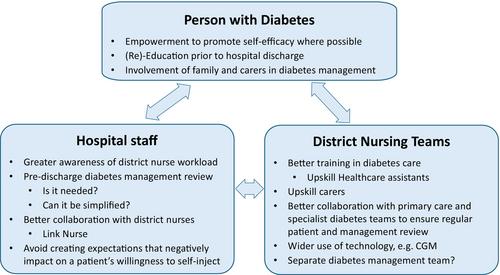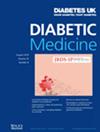The effect of diabetes management on the workload of district and community nursing teams in the UK
Abstract
Aims
The number of older people with diabetes requiring care from district nursing teams is increasing. The role of district nursing teams in diabetes management has expanded to involve diagnosis, treatment and medication administration. As the complexity of caseloads increases, the current model is likely unsustainable. This study aims to understand the current diabetes workload of district nursing teams.
Methods
An online survey was distributed via social media and key stakeholder networks to district nursing teams. Survey items were designed by the researchers prior to pilot testing with potential participants. Descriptive statistical and qualitative analyses were conducted. Data are median ± IQR.
Results
159 district nursing teams completed the survey. The median caseload per team was 300 (IQR 176–407) patients including 21 with diabetes (IQR 14–40; 8.7% (4–20%)). 1.09 home visits per day per person with diabetes lasting 13.8 minutes (excluding travel time) were needed, with most requiring insulin administration. 96% of nursing teams undertake multiple daily visits for some patients. 91% reported workloads relating to diabetes management had increased over the last 2 years; 76% stated current diabetes workloads were unsustainable. More insulin usage, more referrals and a lack of ability or willingness to self-administer insulin has increased the diabetes workload. Possible solutions include better collaboration between healthcare professionals, simplification of insulin administration and glucose monitoring, better training and upskilling of healthcare assistants and promotion of self-efficacy.
Conclusions
Diabetes management forms an increasing component of district nursing workload and is likely to be unsustainable unless new models are found.


 求助内容:
求助内容: 应助结果提醒方式:
应助结果提醒方式:


